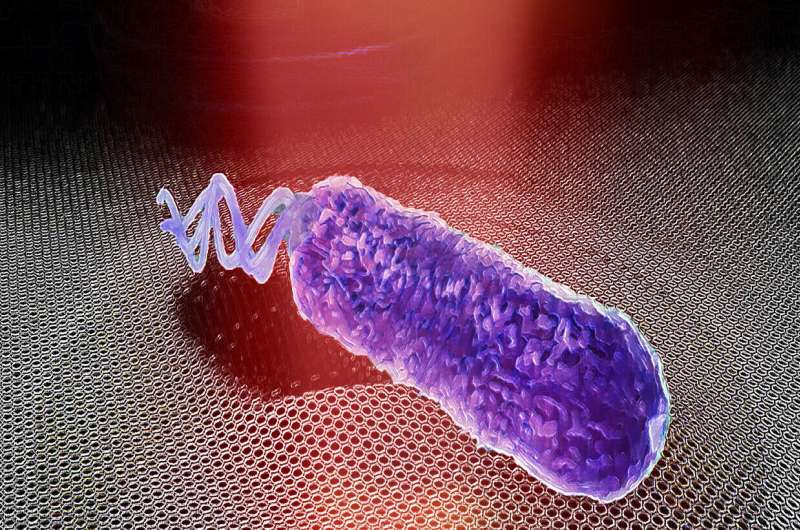
Anything that vibrates, creates sound. This implies, microbes too must emit noise. Does this mean, we can also hear disease? Pathogenic bacteria mixed with other healthy microbe bacteria might sound in a certain way. So, if this technology is used for diagnostic purposes, we could we hear disease!
Researchers at TU Delft, led by Dr. Farbod Alijani, have managed to capture the microbial sound. With the help of graphene drum, they were able to detect low-level noise of a single bacterium.
Microbial melody
Dr. Alijani and his team were looking into the fundamentals of the mechanics of graphene. The allotrope of carbon is one of the most sensitive materials. Graphene is single layer of carbon atoms arranged in a two-dimensional honeycomb lattice nanostructure. It comes with an interesting electrical and mechanical properties.
The team collaborated with another nanobiology group and ran experiments with E. coli bacteria.
They observed that a single bacterium sticks to the surface of graphene sheet. And vibrated in random oscillations. The amplitudes of fluctuation were a few nanometres, which were quite traceable. Yes, they were able to hear the sound of a single bacterium.

Bacterium flagellar beats on graphene
So, what lead to these tiny oscillations? The team concluded that it could be the result of bacteria’s biological processes, especially the tails – also known as the flagella – that helps in propulsion of the microbe. These nanoscale flagellar beats (on graphene sheet) can be transmuted into sound tracks.
These bacterium flagellar beats are nearly 10 billion times smaller than a boxer’s punch. These beats could be random but can have a pattern also if plotted at great depths.
The bacterium showed no movement when it was showered with antibiotics. Had it been resistant to the medicine, the oscillations might have continued at the same level. At times, the vibrations could have taken time till they were completely gone. All depends on the type of drug used exclaimed the lead researcher.
Takeaway
Graphene drum detecting nano motion of a single bacterium has enormous implications in health industry. It will not only assist in detecting antibiotic resistance but in future, who knows, we can also hear diseases. Or how about tracking the conversations/beats going on between mushroom and fungi.
Via: Phys.org



